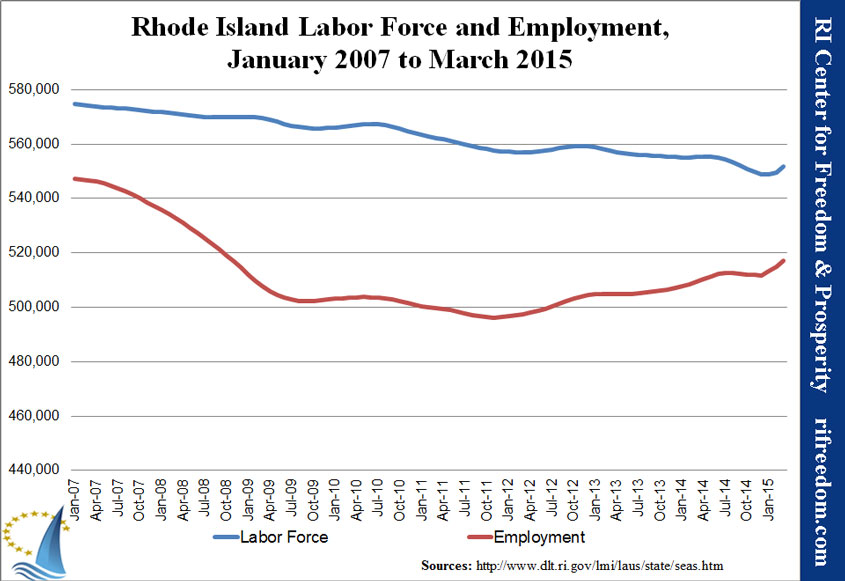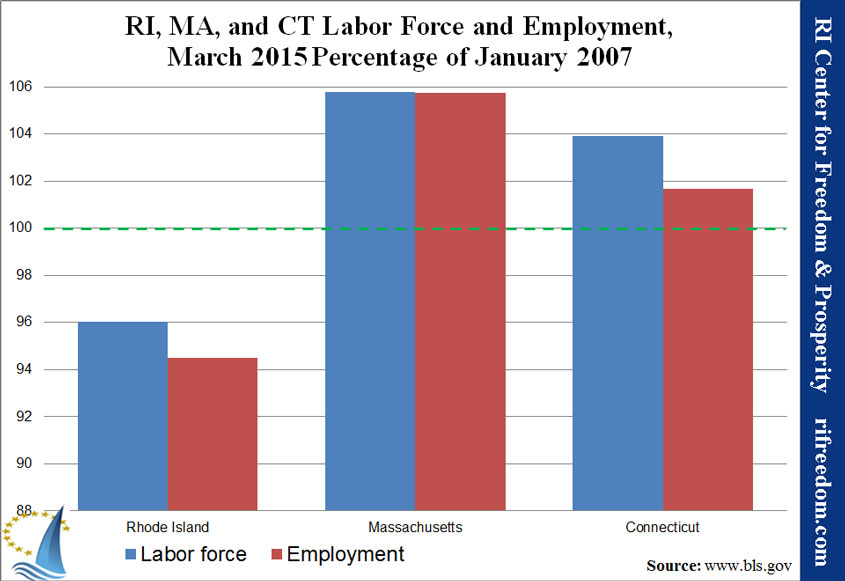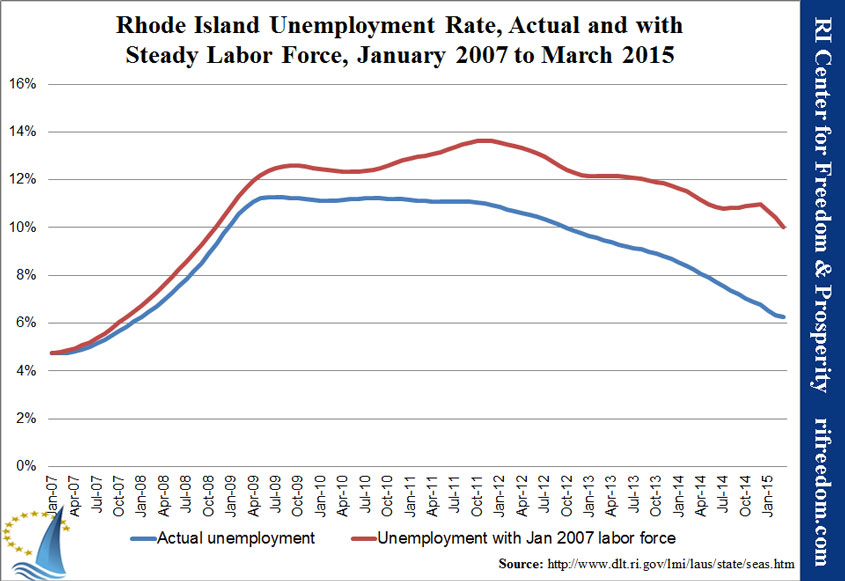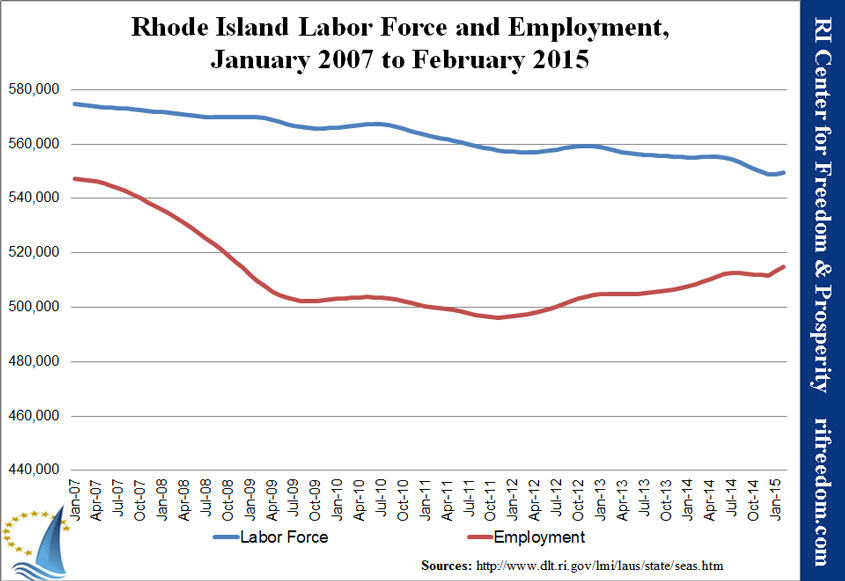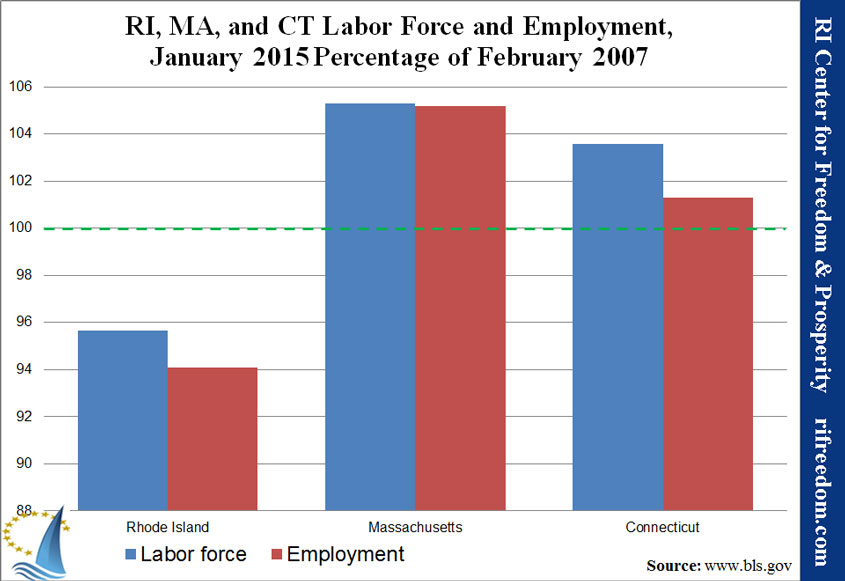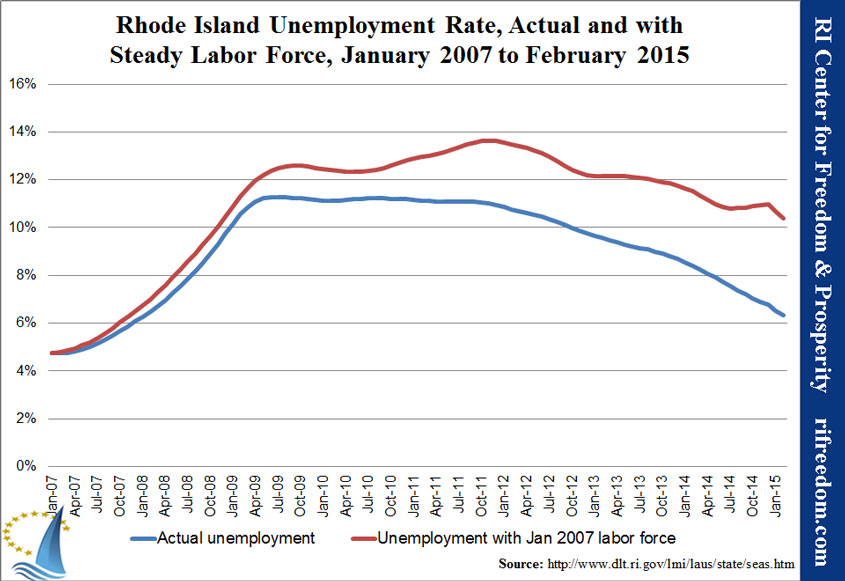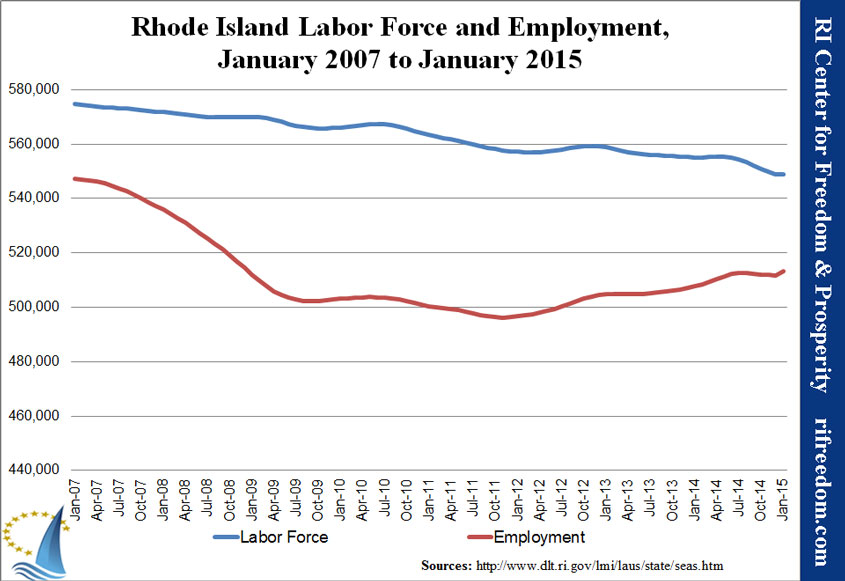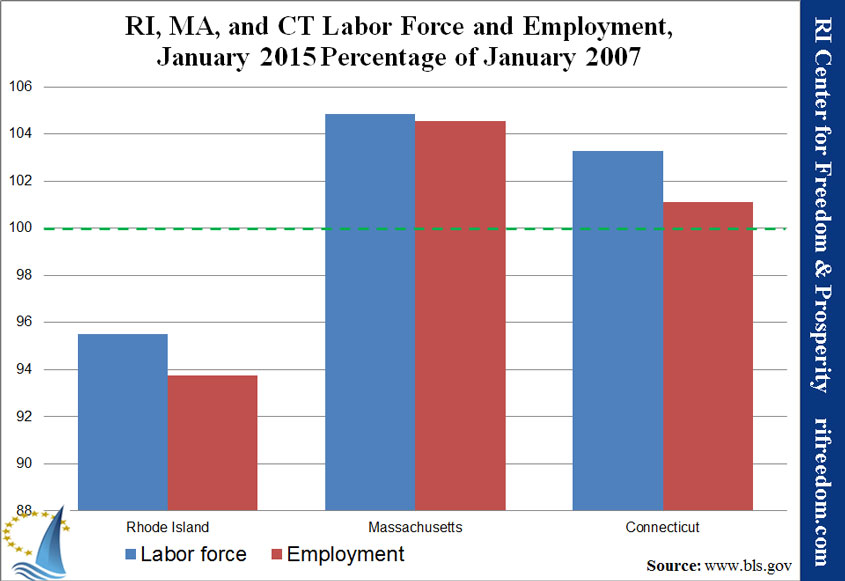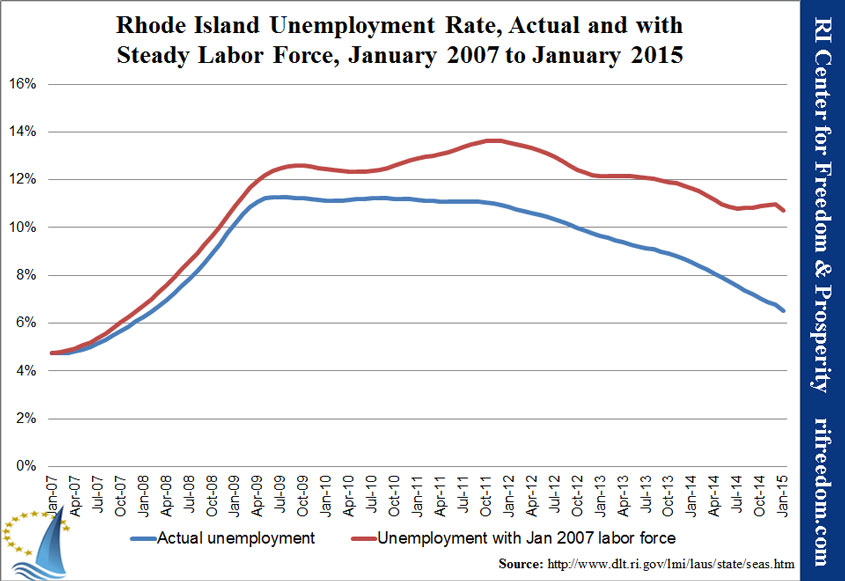POLICY RECOMMENDATIONS: In tandem with plans to realign the institutional incentives of Rhode Island’s welfare services, the RI Center for Freedom and Prosperity recommends the following specific reforms:
- Implement a cash diversion program for new enrollees. Thirty-three other states have such measures to provide lump-sum cash assistance in lieu of full enrollment in the state’s welfare program.
- Decrease the lifetime limit for assistance through the state’s Temporary Assistance for Needy Families (TANF) program from its current 48-month limit.
- Enforcement. Increase accountability by implementing stricter sanctions for noncompliance with work requirements. In Rhode Island, only 11% of TANF recipients are actively engaged in work-related activities, the second-worst rate in the nation. Strengthening the sanctions for failure to participate in work activities would likely increase work participation substantially in Rhode Island.
Download the PDF here
RI’s Poor Welfare Reform Performance
For the Ocean State, perhaps the most shocking finding in the Heartland Institute’s 2015 update to its “Welfare Reform Report Card” is that only 11.0% of Rhode Islanders receiving welfare payments through the Temporary Assistance for Needy Families (TANF) program are “working.” In this case, “working” would even include such activities as attending classes, doing community service, and receiving therapy to improve “work readiness.”
Nationally, TANF work participation ranges from 7.3% in Massachusetts to 68.7% in Wyoming, with a national average of 29.5%, according to the study. In the original 2008 version of the report card, Rhode Island ranked 43rd, with a work participation rate of 24.9%.
In that one statistics, Rhode Islanders can see the results of their state’s welfare-to-work policies, which Heartland graded an F and ranked 45th in the country. That grade and rank are given based on the Ocean State’s overall weakness in five areas of reform that should serve to draw people facing hard times toward work and self-sufficiency.
The Center recommends that lawmakers seriously consider implementing stronger reforms in areas of weakness. Legislators should be careful, however, to craft policies that take account of their state’s actual and unique circumstances.
Work Requirements
The requirement to work is the only area in which RI grades above a C, according to Heartland. As the state’s abysmal 11% work participation rate shows, however, it would be wrong to see the A grade as an indication that nothing can be done.
One consideration is that Heartland only applies three grades to this section: A for immediate work requirement, C for up to a three-month delay, and F for more than that. In Rhode Island, the immediate requirement isn’t so much working as having an “employment plan.”
A second consideration is, as mentioned above, that a wide variety of activities that might be better termed “work preparedness” count for the plan, and the General Assembly is moving in the wrong direction. In their 2014 session, for example, legislators removed the six-month limit that work-readiness education programs could be used to fulfill the requirement (2014 H7242 and S2476).
The third consideration is that Rhode Island’s statutes allow for a wide variety of exemptions, especially for single-parent families (60% of families receiving payments). So, while welfare recipients may technically be required to follow through on an employment plan, the requirement is easily waived and easily answered with activities that aren’t actually work.
Cash Diversion
Cash diversion is one of the two areas in which Rhode Island receives an F, because it has no such policy in place, according to Heartland, although the General Assembly has authorized it. The program would allow social workers to give those in need one-time payments that are relatively large, typically with a stipulation that they cannot receive TANF payments for a period afterward. The idea is to help cover one-time costs, like car repairs, that help family members keep working, rather than ushering them onto welfare.
In this area, the Center would caution that an additional cash diversion program should only be implemented as part of a strong welfare-to-work reform initiative, preferably with bureaucratic reforms that better align agencies’ incentives with the goal of reduced welfare rolls. In an agency without such a culture, or in which cash diversion programs are simply added to other benefits, they could make existing problems worse.
Regardless of whether such a program is created, the General Assembly should remove or limit the blanket authority that currently exists in law.
Integration of Services
Another area in which the Center would advise caution is integration of services, for which Heartland gave Rhode Island its second F.
On paper, the idea is sound. People toward the bottom of Rhode Island’s economic ladder probably don’t only need some money and a soft push into a job search. They also need various forms of therapy (e.g., for substance abuse) and other government services, including childcare, healthcare, heating assistance, and so on.
It makes a sort of intuitive sense to secure services that will help them market themselves as employees. Specifically, Heartland recommends reforms like locating all offices in one building and increasing the ability of case workers to sign their clients up for the full array of services.
The Center’s concern, which it has been expressing for years, is that activists seem to have something more insidious in mind, which we’ve dubbed a “Dependency Portal.” With all welfare programs integrated, and even automated, the emphasis could become on ensuring not that people have access to the programs that they need, but that the government is able to provide as many benefits as people may be eligible for.
Rhode Island is currently engaged in a Unified Health Infrastructure Project (UHIP) that Governor Raimondo’s budget projects to cost $229 million. As the Center understands UHIPs intended design, it will increase the risk without necessarily capturing the efficiencies that Heartland suggests. If the General Assembly remains intent on funding the project, it should move quickly to develop and implement reforms to safeguard against the development of a Dependency Portal.
Lifetime Eligibility Limits
As a state that provides welfare benefits to individuals for up to four years, Rhode Island receives a C from Heartland in this category.
Arguably, the Ocean State actually should receive a little more credit, here, because welfare recipients can only receive benefits for two years within a five-year period. On the other hand, the law does allow for “hardship exceptions,” which would seem to be broadly applicable to families eligible for welfare in the first place.
Moreover, the relevant statute contains potentially contradictory sections that muddy the waters of Rhode Island policy. This leaves the door open for the annual attempts at legislation that wears away at the requirement.
Not only should the General Assembly lower the lifetime limit, but it should also clarify the language of the law to be clearer. Clarity would ensure that regulatory interpretation cannot change the policy and that future legislative changes would have to be unambiguous.
Sanctions
Rhode Island’s second C grade comes in the area of sanctions, or the penalties that the state imposes when recipients don’t comply with the requirements of the program. Heartland notes that Rhode Island’s penalty is full elimination of monthly payments, but marks the state down because the payments are reinstated immediately upon compliance. A longer term penalty would give the requirement more force.
Institutional Reforms
As the above analysis makes clear, the Center does not dispute the value of some degree of safety net for Rhode Islanders who fall on hard times. The overriding goal of such policies, however, should be to guide our neighbors toward self-sufficiency and productive participation in the state’s economy.
The Heartland Institute lays out policy suggestions that would improve Rhode Island’s abysmal performance, but they require institutional incentives about which the Center is skeptical. Ensuring that Rhode Islanders can have full trust in their government to work toward the goals that give welfare programs their moral justification is a prior necessity for full, effective reform of the system itself.
Toward that end, the Center recommends developing institutional reforms to realign incentives for state employees so that individual case workers and agencies overall are motivated to move people off of public assistance and toward work. Such reforms are beyond the scope of this brief and would require additional research, consideration, and discussion.
They might include renegotiated employment contracts that shift the weight of compensation packages to reward success offloading beneficiaries. On an agency scale, they could also include pilot programs involving longer-term block grants.
In undertaking to reform Rhode Island’s public safety net — or in deciding not to do so — legislators must give full consideration not only to the needs of beneficiaries, but also the capacity of a struggling, fading private sector to support them. Legislators must also be constantly aware of the unintended consequences that their program can have, whether in terms of increasing dependency, of fostering a special interest culture within the bureaucracy, or of distorting the state’s economy.

